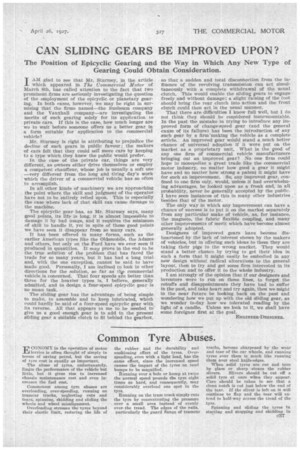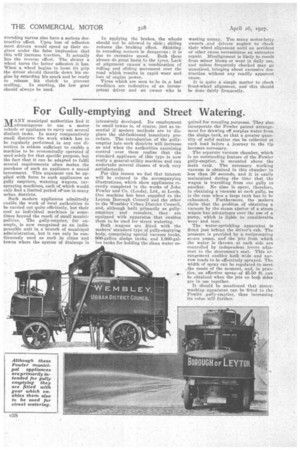Common Tyre Abuses.
Page 59

Page 60

If you've noticed an error in this article please click here to report it so we can fix it.
"fil CONOMY in the operation of motor U4 lorries is often thought of simply in terms Of saving petrol, but the saving of tire cost is equally as important.
The abuse of tyres, unfortunately. limits the performance of the vehicle but little, but it gives rise to increased chassis maintenance cost and even increases the fuel cost.
Commonest among tyre abuses are overloading, over-speeding, running on tramcar tracks, neglecting cots and tears, spinning, skidding and sliding the wheels and wheel misalignment.
Overloading stresses the tyres beyond their elastic limit, reducing the life of the rubber and the durability and cushioning effect of the tyres. Overspeeding, even with a light load, has the .same effect, since the increased speed causes the impact of the tyres on road bumps to be magnified.
Running over a hole or hump at twice the normal speed pounds the tyre eight times as hard, and consequently, may considerably overload one spot in the tyre.
Running on the tram track simply cuts the tyre by eonce»trating the pressure over a small area instead of evenly over the tread. The edges of the rails, particularly the guard flange of tramcar
tracks, become sharpened by the wear and tear of the car wheels, and running tyres over them is much like running them over steel knife-edges.
When solid tyres are cut and torn by glass or sharp stones the rubber slivers. Slivers should be cut off a solid tyre at once when they appear. Care should be taken to see that a clean notch is out just below the end of the tear. If the Sliver is left on it will continue to nap and the tear will extend to half-way across the tread of the tyre.
Spinning and sliding the tyres in starting and stopping and skidding in c37"
rounding curves also have a serious destructive effect. Upon loss of adhesion most drivers -would speed up their engines under the false impression that this will increase traction. It actually has the reverse effect. The slower a wheel turns the better adhesion it has. When a wheel begins. to loose its grip the driver should throttle down his engine by retarding his spark and be ready to release his clutch to prevent
stalling. In starting, the low gear should always be used.
In applying the brakes, the wheels should not be allowed to slide ; sliding reduces the braking effect. Skidding in rounding corners is dangerous ; it is due to excessive speed. Both these abuses do great harm to the tyres. Lack of alignment causesa .combination of rolling and sliding movement over the road which results in rapid wear and loss of engine power.
Tyres which are seen to be in a bad condition are indicative of an incompetent driver and an owner who is wasting money. Too many motor-lorry owners ,and drivers neglect to check their wheel alignment until an accident or other cause necessitates an extensive repair. Misalignment is likely to result from minor blows or wear in daily use, and unless frequently checked may go unnoticed, bringing about excessive destruction without any readily apparent cause.
It is quite a simple matter to check front-wheel alignment, and this should be done fairly frequently..












































































































